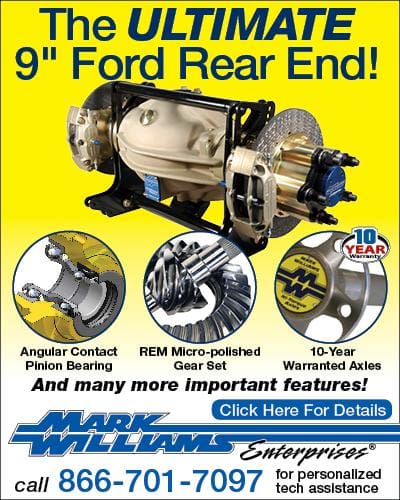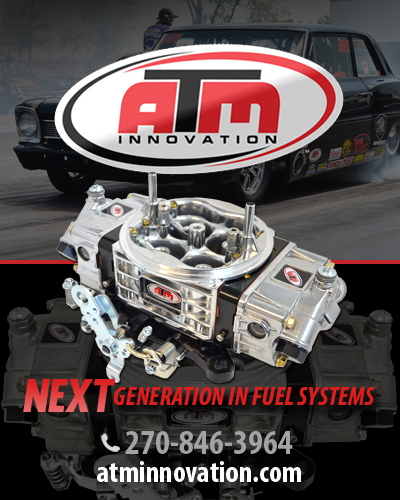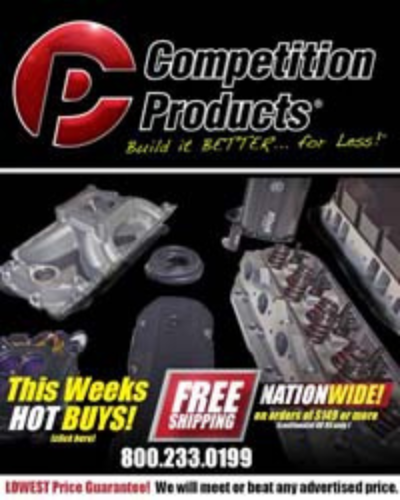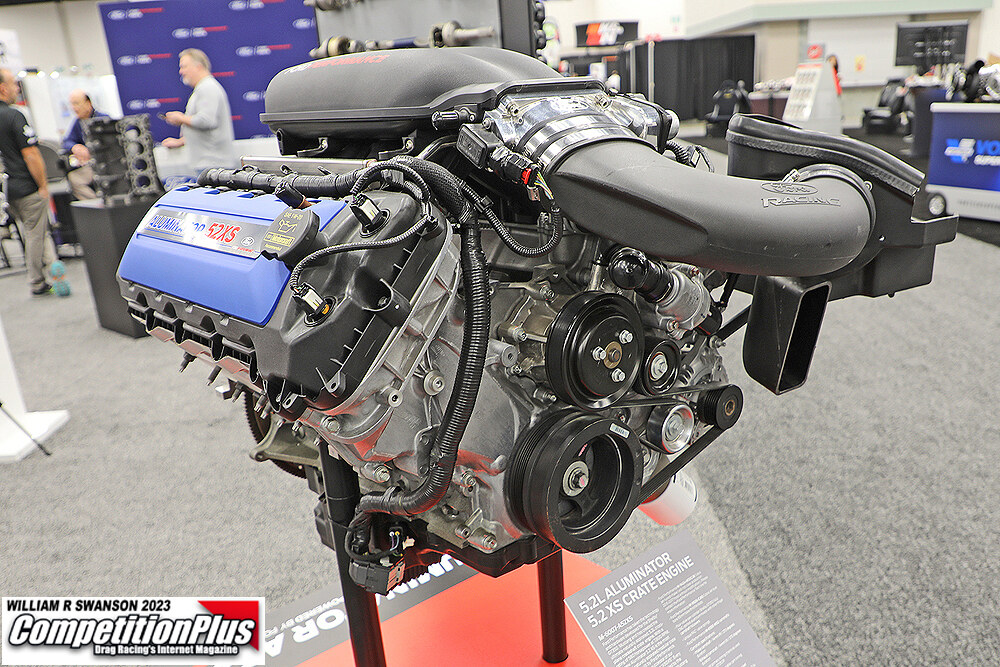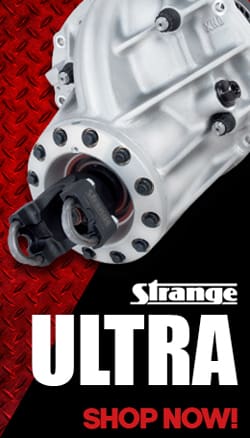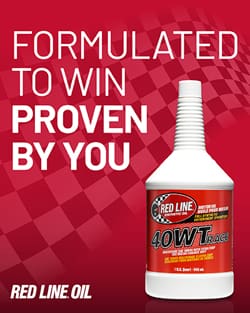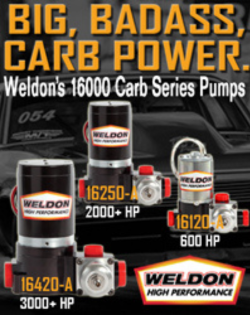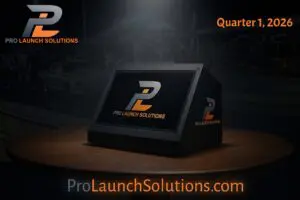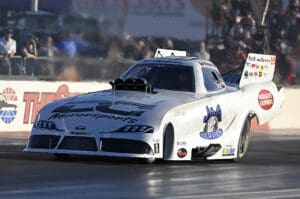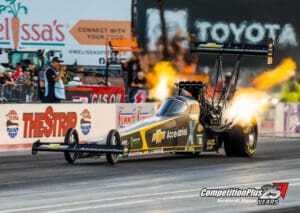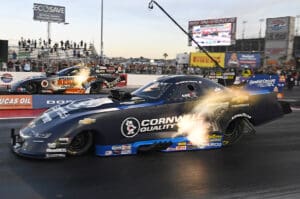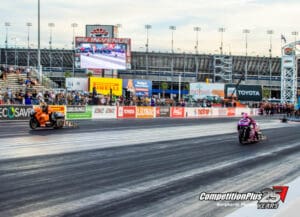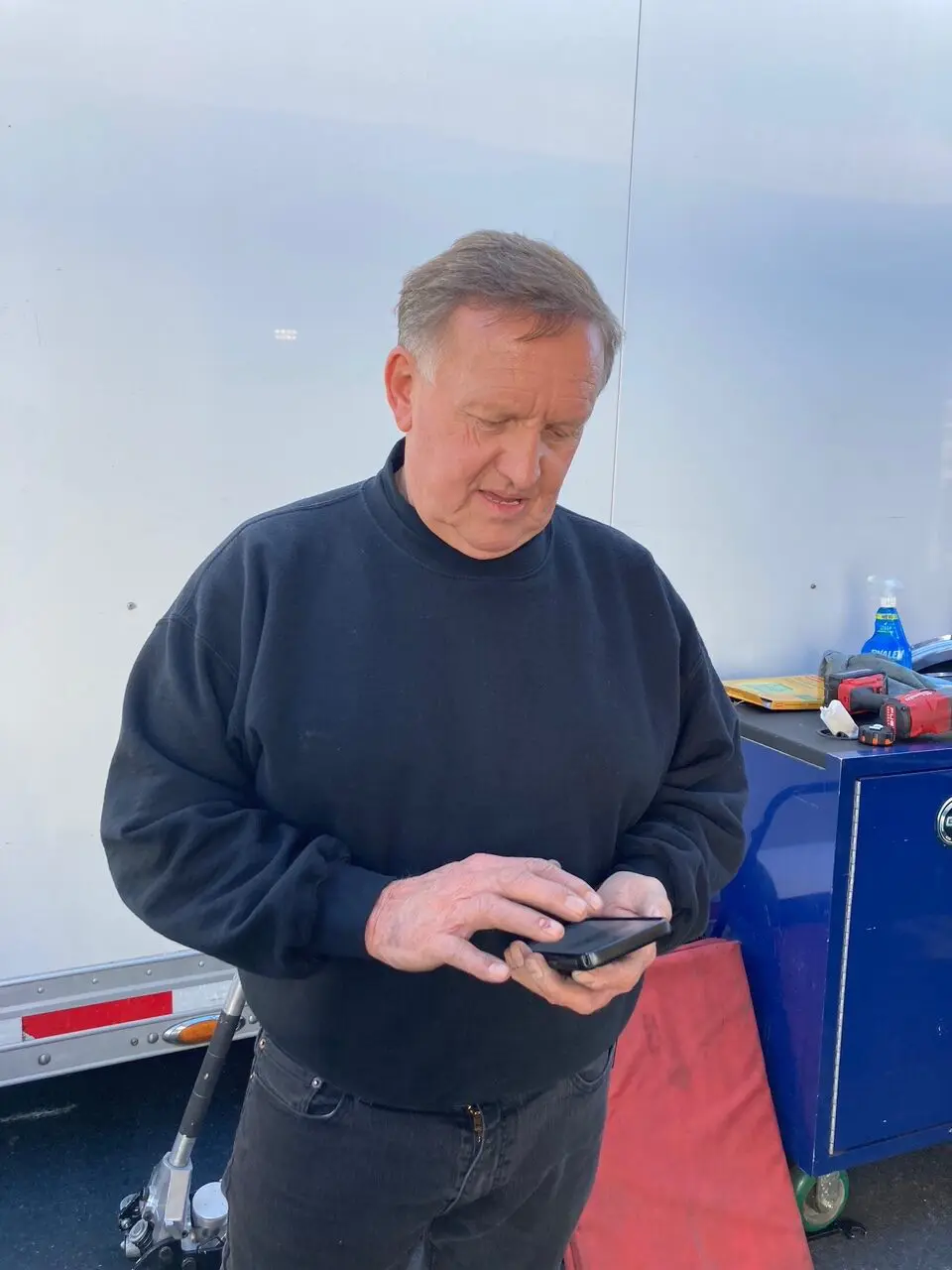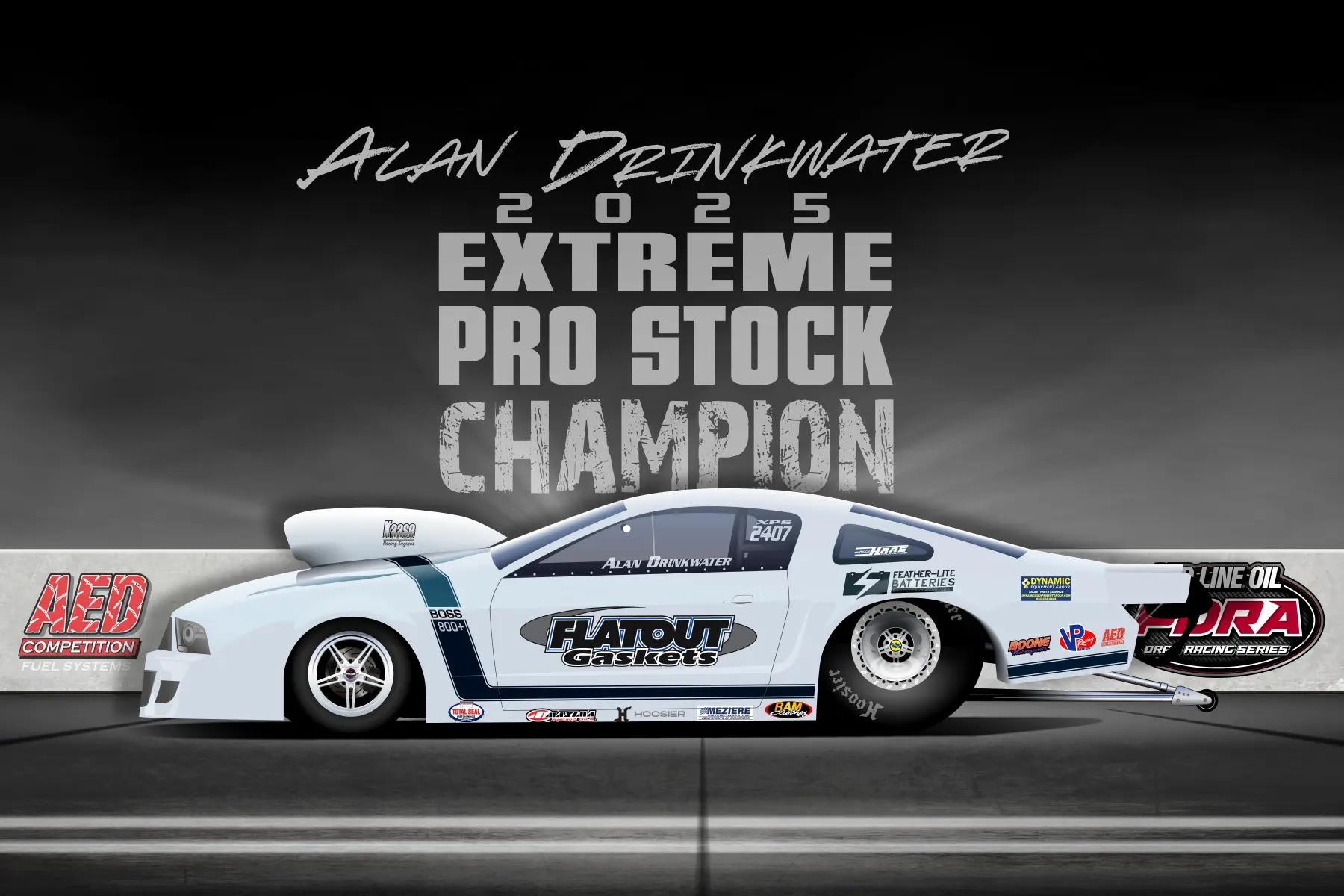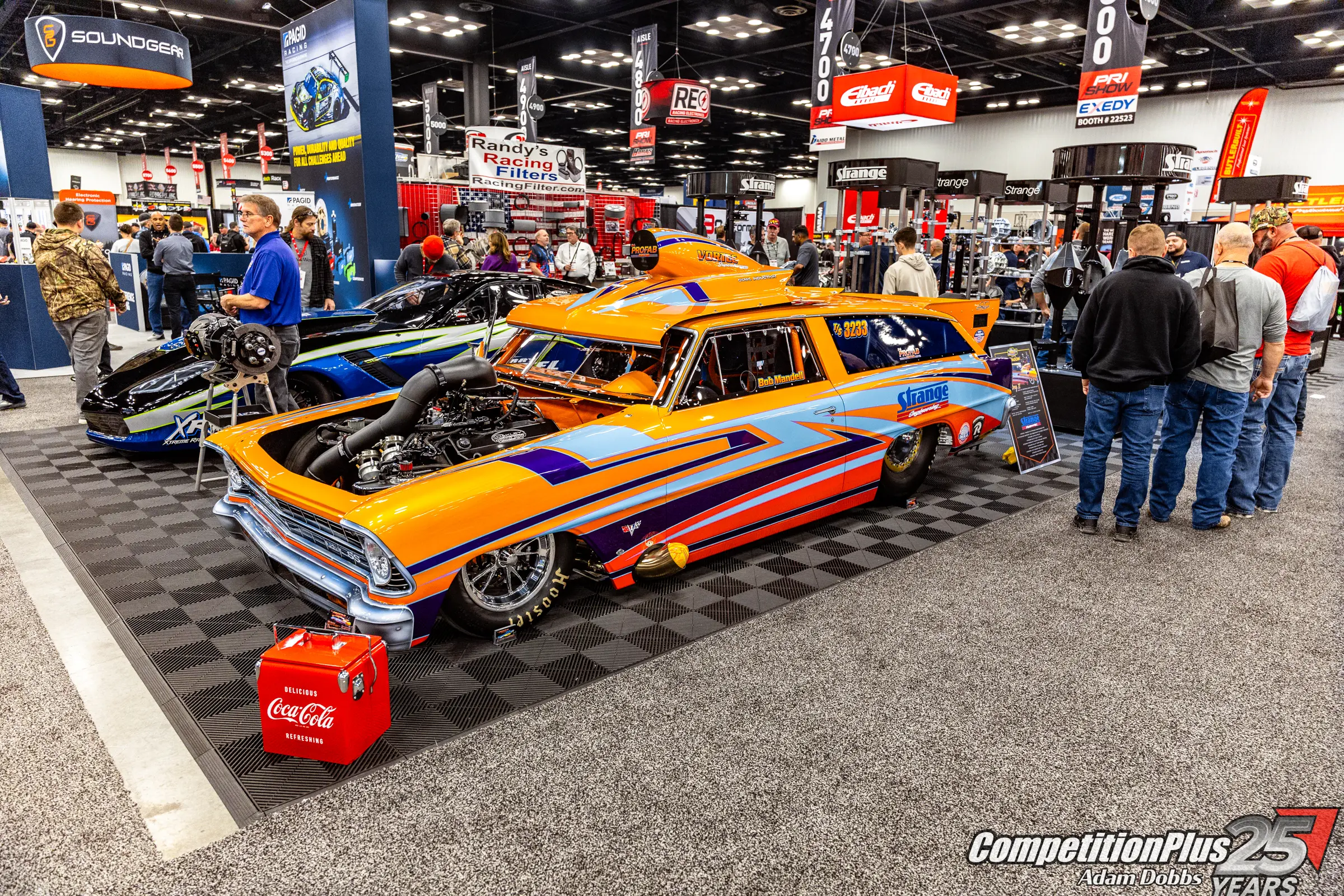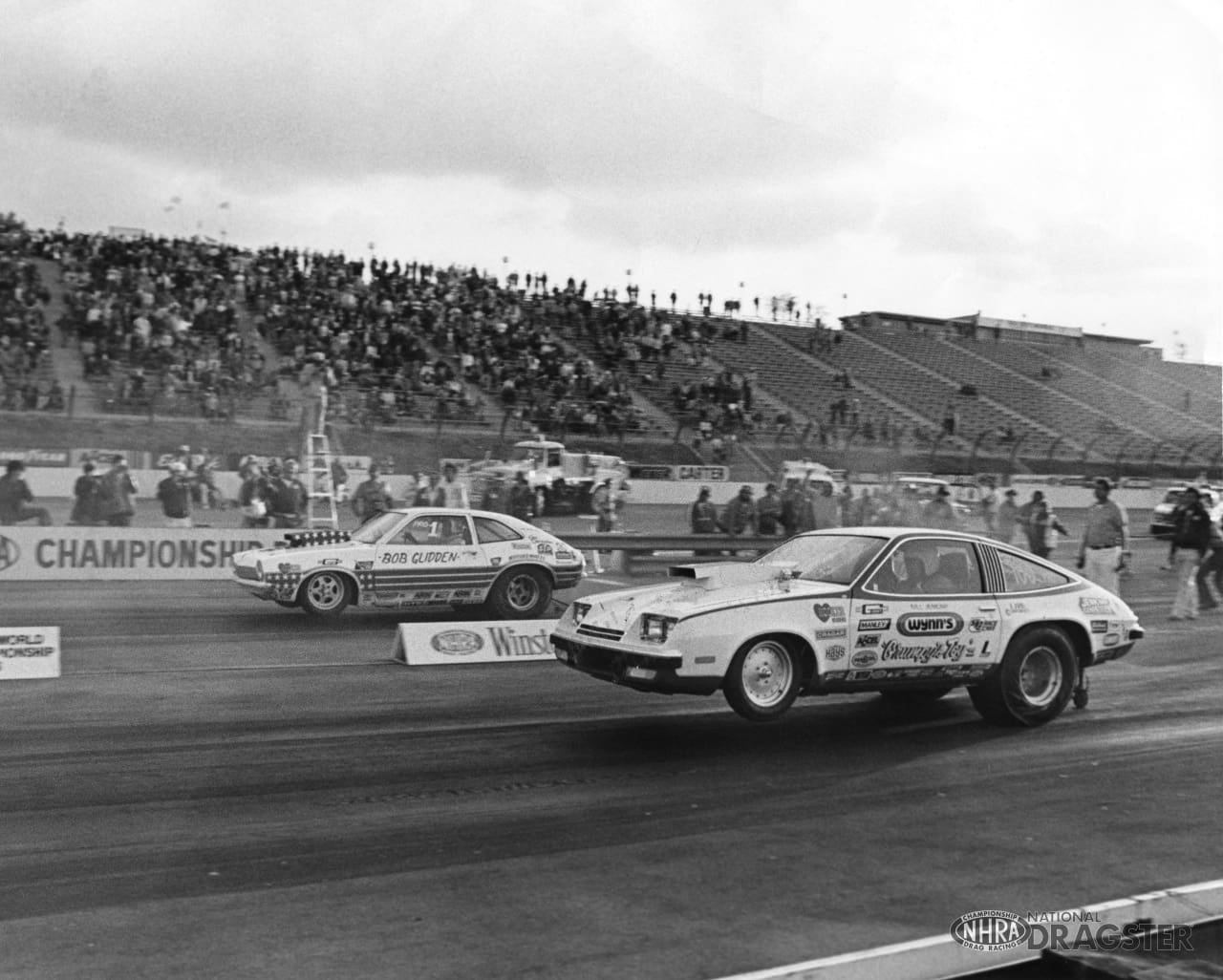CHECK OUT THE ENTIRE VIDEO LIST AT BEE-ON VIDEO

But what he has seen started as a simple idea of chronicling his own drag racing history snowballed into one of the world’s most extensive history preservation efforts.
Amos began his journey of preserving drag racing’s heritage in 1985 when he attended a Super Ford event at Milan Dragway. The event was hosted by John Paradise, credited as one of the first to restore a legendary Ford Thunderbolt.
On his shoulder, he toted a two-piece BETA video recorder he had purchased to document his own racing endeavors.
“I was involved with a C/Econo Dragster at the time, and I got the thing to record us making passes,” Amos said. “I got this chance to go to Milan because they had all the old cars that I like. And when I got there, I carried my BETA machine with me. I swung it over my shoulder and had a handheld camera. And I interviewed a guy with a ’65 Mercury Comet, an A/FX car. It turned out it was Arnie Beswick’s ’65 Mercury Comet. Dave Quinns was the guy’s name.”
Amos began asking questions, and the more he did so, the more he realized he was headed down the right pathway.
“On Saturday night, I went back to the hotel, and I decided to play it back for myself,” Amos recalled. “When I looked at it, I said, ‘You know what? There might be some other people out there who would enjoy seeing this event that wasn’t here. So I thought perhaps there might be a business opportunity there.”
Thus Bee-On Video was born.
“I was interviewing people that were just regular car owners and things like that. And I thought, ‘You know what? These people might not be famous, but they can be on video with me.”
Amos admits the name might be a little hokey, but it all serves a higher purpose in the grand scheme.
“I wanted to record people and have them be on video for archiving the events and their story because every car has a story behind it,” Amos explained. “That’s what I attempted to do in all of my interviews with people was bring that story out.”
Along the way, Amos began to see his purpose in drag racing. He crossed paths with classic collector Brent Hajek, who connected him with a few drag racing legends for interviews, such as Dick Brannon and Phil Bonner.

 “All of a sudden, I had a chance to interview these guys. The only time I had ever known them was reading magazines when I was growing up. I had the first issue of Super Stock, and I studied these things like a bible. I knew these guys like they were my brothers, but this was the first time in real life that I actually got to meet them.
“All of a sudden, I had a chance to interview these guys. The only time I had ever known them was reading magazines when I was growing up. I had the first issue of Super Stock, and I studied these things like a bible. I knew these guys like they were my brothers, but this was the first time in real life that I actually got to meet them.
“Then I started asking them questions, and it just gelled. It seemed to go very, very well. And I began to put little videos together with these stories about these guys. Brent Hajek said to me, ‘You know, Jim, what you’re doing is real important. Because what you’re doing, these guys aren’t going to be around forever.”
Hajek’s comments only confirmed what was already floating in Amos’ mind. He felt a purpose in documenting these legends’ stories.
“I really did that from then on,” Amos said. “I sought out opportunities that I could get together with at an event where these people were. We started interviewing them, and so that’s how the interviews and the famous people in the collection are. I have hundreds of these interviews by famous and not-so-famous people in my library.”
Then a funny thing happened along the way to documenting drag racing history. Amos became a curator of sorts for private collections of amateur drag racing videographers of the era.
“I went to an event at Charlotte Motor Speedway promoted by Frank Spittle, where they made runs on pit road at Charlotte Motor Speedway,” Amos recalled. “Then the video stuff took on a whole new life.”
Amos had already started his own video collection back in his days of serving in the U.S. Army, using an 8 MM silent camera that he purchased at the PX.
“I bought an eight-millimeter silent movie camera with .54 film in it; it had a little turn, three lenses on it,” Amos said. “You had to turn them manually. So I would take some movie footage of things when I could do it, and I recorded Wally Bell with the Z11 car and the Mercury Comet. He went on to buy the Sox and Martin’s Comet and ran that for a while. I got footage of all this stuff.”
During this era, Amos was friends with drag racer Lee Malkemes, and they traveled together in the 1960s until the amateur filmmaker stepped away from drag racing for marriage and a child.
Malkemes match raced down South and worked his way up North, racing Hubert Platt and Ronnie Sox until a severe crash at Piedmont Dragway, outside of Greensboro, NC., sent him home to Wilkes Barre, Pa, beaten and bruised.
The crash was a thing of the past until Amos and Malkemes were at that 1988 Frank Spittle Reunion [Charlotte Motor Speedway], in a bench racing session with longtime friend Wally Bell and others, and was approached by a gentleman named Bill Gusler from Greensboro, NC, who asked if this was the crash at Piedmont Dragway they had discussed.
“You know, I was there that day, and I took movies of that event,” the gentleman said. “I said, ‘You’ve got to be kidding me. You have got to be kidding me.”
” He said, ‘No, no. I have it.”
That’s when Amos told him he was in the process of converting 8 MM film into videotape.
” He said, ‘Well, you’re welcome to come to my house. If you can do something with it there. I’m not going to give this film up to anybody, and I’m not going to let it out of my possession. I’ve had it all these years,” Amos recalled.
CHECK OUT THE ENTIRE VIDEO LIST AT BEE-ON VIDEO
 In what could be considered primitive by today’s standards, Amos worked his magic to deliver the treasure.
In what could be considered primitive by today’s standards, Amos worked his magic to deliver the treasure.
“I carried my stuff to North Carolina, and we went to the house. And I’ll never forget, Malcamus and I were sitting there, and we start playing the movie, and all you can hear is the click of the camera with the not a word is being said,” Amos said. “All of a sudden, here comes Malkemes’ car in the opposite lane, and he does a burnout with the Thunderbolt. He backs it back up. He goes down the lane, and on the top end of the track, boom, it goes over the big cloud of dust. You can’t see the car; there’s such a cloud of dust.
“Then it showed the car coming back on the trailer all bent up, roof down, a total wreck. Of course, Malkemes is nowhere to be found.”
There was total silence as the friends took in the memory.
“It was almost a moment where you wanted to cry,” Amos admitted. “It was that kind of an emotional event for us. He had a lot of racing at Piedmont. He had gone to the Spring Nationals of Bristol in ’65, the first year, ’66, ’67. And he did all of those things, and he gave them to me.”
And in one fell swoop, Bee-On Video went to the next level.
“He allowed me to copy them that day, and he said I was free to use whatever I wanted to in a production,” Amos said. “So I came home and I put this stuff on my table and I decided, ‘How am I going to do this?”
Others had started the trend of converting 8 MM films into videotape entertainment. Amos knew he had a treasure chest of drag racing history.
Amos has used the collections of 50 or so amateur videographers to create upwards of 30 titles.
While other productions had chosen to use copyrighted music, Amos elected to go in another direction.
“I collected sounds,” Amos admitted. “That was my mission. Then I started going to events, and I started isolating sounds. Luckily there were a lot of the original cars, 427 Fords, 409 Chevys, Max Wedge Mopars, and Hemi cars, and all their sounds are a little bit different. And I started cataloging them all. Today I have thousands of sounds, and I index them so that if I have a piece of film that’s Pro Stock and a Hemi car with a four-speed or a five-speed that can go with the silent footage.
“When I put a sound on there, it’s an accurate sound. And then I use filler sounds for the pit area, and I would put the sounds of just cars and pits or on the return road.”
Credit Dave Eicherly as the inspiration for developing a sound platform in Bee-On Videos.
“I was at a York reunion when a guy came up to me and told me he was at the Super Stock Nationals at York and took movies of them all. Turns out he had all the original sounds, used an eight-millimeter camera that was synced up to a microphone that hooked into a cassette tape player.”
Eicherly entrusted Amos with his entire collection.
Amos considered his production approach both primitive and effective.
“When I put the sound on the film, it came to life,” Amos explained. “You could hear Malcamus’ 427 Ford engine doing a burnout, going through the gears. You heard Sox’s Hemi car in the left lane. You had the right sounds. I got excited, and I still do, when I put these sounds on a silent piece of film.”
Amos admits those who purchased his videos were pleasantly surprised. Other amateur videographers, who had footage of their own, began to offer their footage for Amos to work his magic.
“To convert a film is even very expensive today, and I did it all for free for them,” Amos said. And, of course, we agreed that I never kept the film. I always gave it back to the contributor. I never kept it in my library, but I got their permission to use it in a production as little or as much as I needed, and that was our licensing agreement with those things. That’s how my library is filled up beyond my own personal stuff.”
Amos had quite the personal collection from racing every week. Ironically, it was one of the few major races Amos missed is the one that produced. The 1965 Super Stock & Drag Illustrated Nationals were held on August 7, and Amos couldn’t be there for good reason.
“My son was born that morning,” Amos revealed.
“It turned out to be the Woodstock of drag racing,” Amos said. “One guy I met from Chambersburg, Pennsylvania, had some of the best footage I ever saw. Oh my god, it would knock you out. And he has since passed away. He gave me all the footage; and said, ‘Here, use it.”
“I had another guy give me some killer still photographs of that event. All the big cars. He had Stage 4 cancer then, and he said, here, I want you to use these to preserve that day. And he had so many memories of going there that day with his brother, and he shared them with us, and we used them as part of the production.”
 Amos found a good video editing style to use still photos when moving film was unavailable and borrowed a chapter from the Ken Burns approach to deliver maximum effect. He had to look no further than a documentary on the Battle of Gettysburg for a perfect example.
Amos found a good video editing style to use still photos when moving film was unavailable and borrowed a chapter from the Ken Burns approach to deliver maximum effect. He had to look no further than a documentary on the Battle of Gettysburg for a perfect example.
“He told that story of Gettysburg with all still photographs,” Amos said. “It was incredible. You had the feeling of motion. And I used to do that. I would turn the camera on, and I’d have the photograph zoom in and I’d pan left to right, or I’d go and zoom it back and in and out and so on. I didn’t even know what I was doing at the time.”
Amos’ journey to historical preservationist came via a stint working at a Ford dealership, then a 31-and-a-half year stint as a Pennsylvania State Trooper.
Even then, while patrolling the freeways of the Keystone State, he would sit back and admire the race cars traveling through his state to the drag strips. He admits he once pulled over a ramp truck to get a closer look at the Mercury Comet flip-top Funny Car they were transporting.
“Maybe it wasn’t totally appropriate, but they’d be all nervous when I’d pull them over,” Amos said. “I’d talk cars with these guys. And they’d all be relieved when they realized they didn’t do anything bad, you know. And they had a chance to talk about their car, and it was cool.
“I’ll never forget Kens and Lansbury car, and I said, ‘man, you guys came from all the way in Denver on a car with this rollback, ramp truck?”
“Turns out they were going to the 1966 Super Stock Nationals at New York National Speedway on Long Island. And they really did not want to go, but they had to go because of their factory obligation. So I’ll never forget that.”
The more prominent the name, the higher likelihood you might get pulled over to talk racing.
“I remember pulling Jungle Jim over,” Amos admitted with a chuckle. “You could see the cars, which attracted me when they were out there. So I did that job for thirty-one and a half years. I was driving a desk at the end. I retired as a major. I had a pretty good position when I left the job after thirty-one years.”
Retirement lasted only a short time as Amos found himself teaching at a four-year college and then later in high school down in Florida.
“Trying to sell American history to sophomores in high school is a nearly impossible task,” Amos admitted. “They don’t want to hear about old times or old things. So then, I built a drag race segment into my lesson plan, believe it or not. I talked about the history of drag racing with these kids. And I found out a lot of them were so interested in automotive and so on like that. And we had a good time with that, so.”
Teaching drag racing history was right in his wheelhouse. Each of his thirty productions are special to him.
“I’ve done thirty full-length video production. And you know, when people ask me that question, I say, you know, it’s like asking somebody who has six children which one is his favorite. It’s pretty difficult to say. I enjoyed the first one I did because it was so primitive, and then I went back and redid it to make it better, you know, when I got better equipment. But I love that Super Stock and FX era, 1963 or sixty-seven. Does that tell you?”
Now Amos does a different kind of teaching, one to a class exponentially larger than the one at school. His new approach is teaching drag racing history to the masses.
“It’s been a blessing to have a part in preserving the sport’s history for generations to come,” Amos said. “I have been fortunate to witness what happened in this great sport and even more fortunate to be able to share with drag racing fans. When people watch a Bee-On Video, I want them to feel as if they were there back in the day, enjoying some of the greatest drag racing memories ever.”
CHECK OUT THE ENTIRE VIDEO LIST AT BEE-ON VIDEO











